8) Observations in Cross Polarized light
1/14
There's no tags or description
Looks like no tags are added yet.
Name | Mastery | Learn | Test | Matching | Spaced |
|---|
No study sessions yet.
15 Terms
anisotropic minerals in XPL
split light into 2
resolve light rays into 2 plane polarized rays that travel at diff velocities and vibrate perp to each other
double refraction
what are uniaxial minerals, examples?
one axis where double refraction doesn’t occur
tetragonal, hexagonal, rhombohedral
what are biaxial minerals, examples?
2 axes where double refraction doesn’t occur
triclinic, monoclinic, orthorhombic
what is optic axis?
along this axis, light behaves as if mineral was isotropic
explain the o-ray and e-ray
ordinary ray: angle of refraction is zero, RI = 0, behaves according to snell’s law
extraordinary ray: appears offset from ordinary ray, RI ≠ 0
explain fast ray and slow ray
faster ray is at a higher level than slow ray
2 rays produced by double refraction will have 2 different refractive indices
what is birefringence
difference in RI or slow and fast ray in the mineral
max bire: highest n – lowest n
bire = ∂
diagnostic property
what is retardation
fast ray and slow ray vibrate in planes that are perpendicular to each other
measure of the lag of slow ray behind fast ray as it emerges from the mineral
retardation = ∆
how are retardation, thickness and birefringence related?
retardation = thickness * birefringence
∆ = d(nslow–nfast)
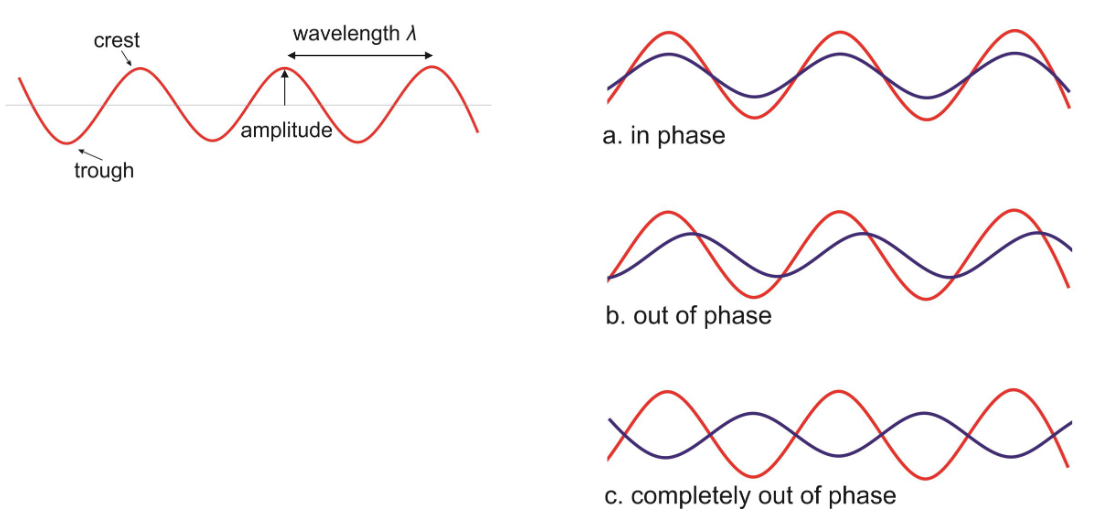
explain abc diagrams
a: rays are in phase with each other, constructive interference, amplitude increases, increased intensity of light
b: slightly out of phase, amplitude will add but net intensity will be less than start
c: completely out of phase, destructive interference, amplitude drops to zero, no light emerges
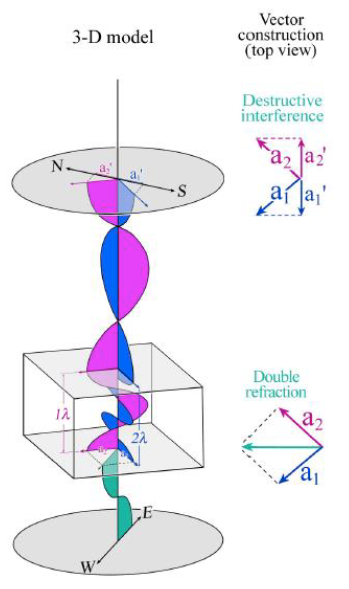
explain this diagram
retardation is 1 lambda
pink = fast ray, goes through 1 wavelength inside crystal
blue = slow ray, goes through 2 wavelengths inside crystal
at the upper polarizer, E-W components of the rays get disrupted and you are left with only the N-S parts of the rays, and because the retardation is exactly 1 lambda, it causes perfect deconstructive interference, so no light gets through and the mineral will appear black
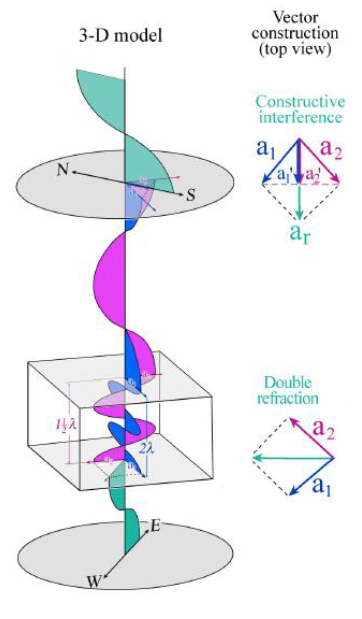
explain this diagram
retardation is ½ lambda
pink = fast ray, goes through 1.5 lambda inside crystal
blue = slow ray, goes through 2 wavelengths inside crystal
at the upper polarizer, rays are perpendicular in the xy direction, but in the Z direction they are in the same direction, this causes constructive interference
why are different colours causes?
white light has many wavelengths, not all are blocked at the same rate
for example at retardation of 400nm, short wavelengths get blocked and longer wavelengths pass through as we see them as colour
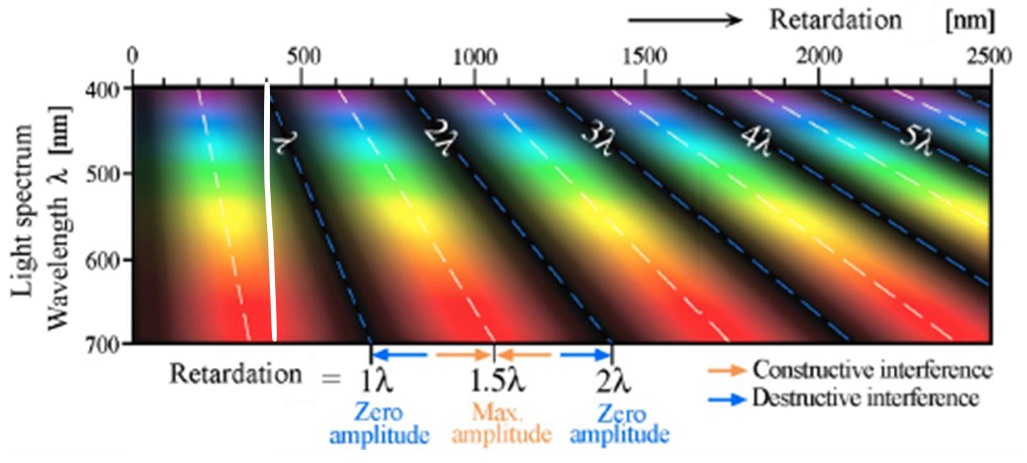
what are interference colours?
colours you see depends on the magnitude of retardation, and whether the fast and slow rays are in or out of phase
colour will not change while spinning under XPL, but brightness will change
colours between different grains in sample can differ due to cutting along a different plane
some colours have destructive interference and don’t pass through, and some colours have constructive interference and they pass through
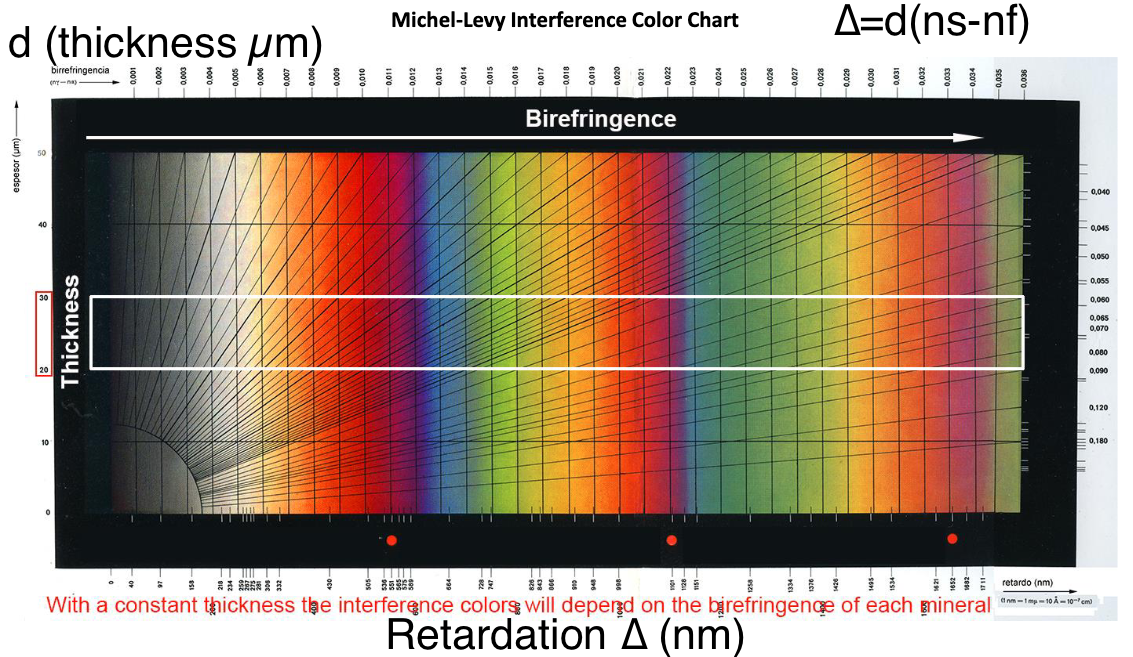
explain colour chart
divided into orders, colours get washed out in higher orders
retardation is path difference between slow and fast ray
birefringence is difference between slow ray and fast ray